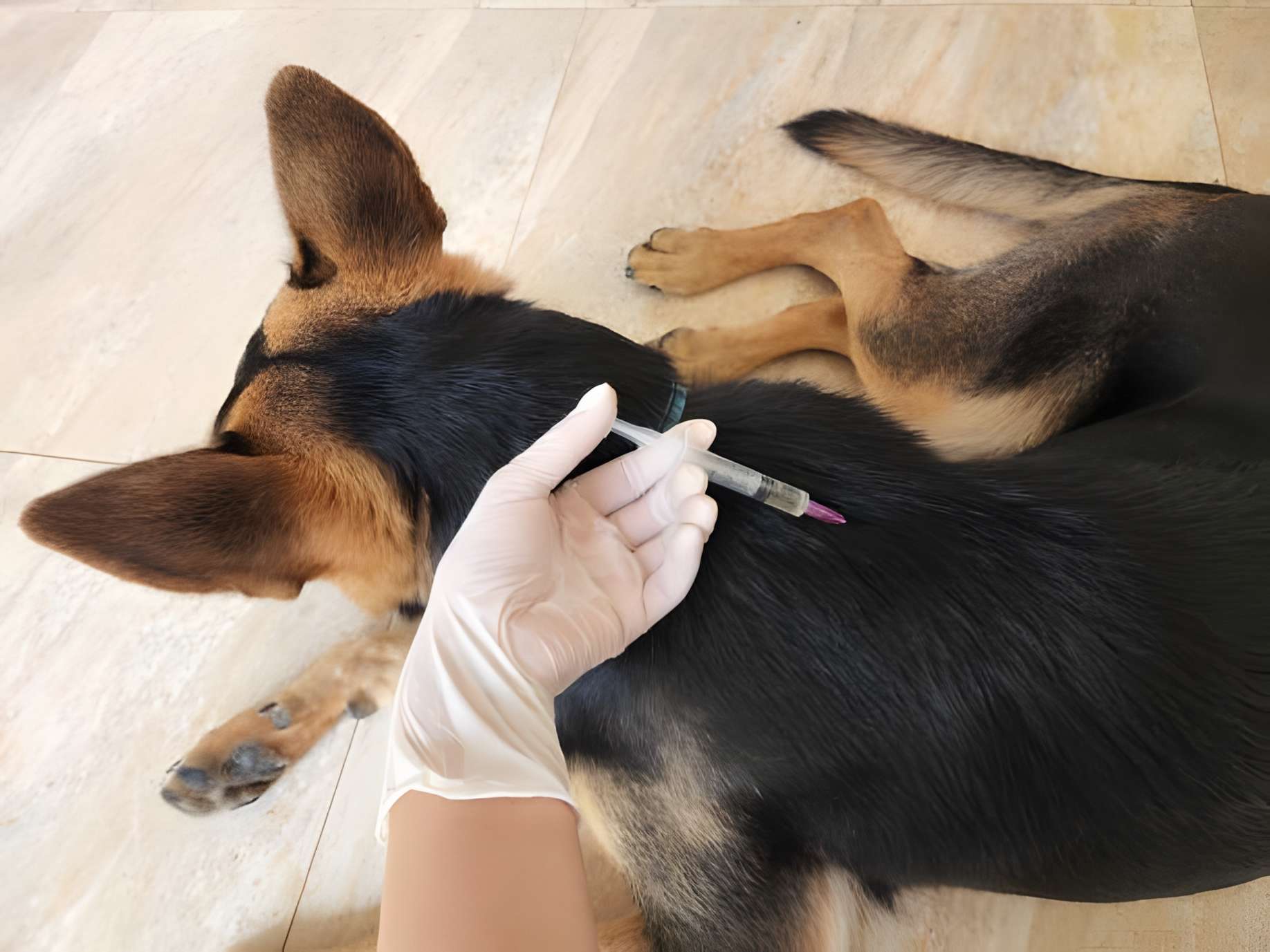Leptospirosis in dogs, also known as “lepto,” is a serious bacterial disease affecting the kidneys and liver. The bacteria responsible for leptospirosis are spread through the urine of infected animals. Once the bacteria enter the environment, they can survive in water or soil for extended periods, posing a significant risk to dogs.
Dogs contract leptospirosis when the bacteria enter their bodies through broken skin or mucous membranes. These include the eyes, nose, and mouth. Ingestion of contaminated water also plays a role in spreading the infection. Leptospirosis is a zoonotic disease, meaning it can be transmitted from dogs to humans. For humans, the disease can lead to flu-like symptoms and severe complications like liver or kidney damage.

Risk Factors for Leptospirosis in Dogs
Several factors increase the risk of leptospirosis in dogs. Exposure to contaminated water sources, such as streams, lakes, and puddles, is a significant concern. Dogs are at risk if they come into contact with wildlife or farm animals carrying the bacteria. Additionally, interaction with infected dogs or their urine can lead to the transmission of leptospirosis.
While leptospirosis was once primarily a rural disease, it is now increasingly common in urban and suburban areas. Dogs who frequently play in or near mud or puddles are at a heightened risk of infection. As urbanization expands into previously rural areas, the spread of leptospirosis continues to grow.
Signs of Leptospirosis in Dogs
Recognizing the signs of leptospirosis in dogs is crucial for early intervention. Common symptoms include lethargy, increased thirst, vomiting, and loss of appetite. These signs can be subtle, making it easy to overlook the presence of a severe illness.
Additional symptoms may include fever, jaundice, dark-colored urine, and joint or muscle pain. If your dog exhibits any of these signs, seeking veterinary care immediately is essential. Leptospirosis is a serious disease that requires prompt treatment to prevent life-threatening complications.
Diagnosing Leptospirosis in Dogs
Accurate diagnosis of leptospirosis in dogs involves a combination of clinical examination, exposure history, and diagnostic tests. The most commonly used tests include the microscopic agglutination test (MAT), PCR test, and cage side test. Each of these tests plays a role in confirming the presence of leptospirosis.
The MAT test detects antibodies in the blood, though it may require repetition to confirm a diagnosis. The PCR test, on the other hand, identifies the DNA of leptospira bacteria in blood or urine samples. In some cases, all three tests are performed to ensure an accurate diagnosis, guiding appropriate treatment options.
Treatment of Leptospirosis in Dogs
Early treatment is critical for dogs diagnosed with leptospirosis. Antibiotics are highly effective when administered promptly, preventing severe damage to the kidneys or liver. However, if the disease has progressed and caused organ damage, more intensive care may be required.
In severe cases, hospitalization may be necessary for intravenous fluids and supportive care. Hemodialysis might also be required to replace kidney function while the antibiotics work to clear the infection. Despite successful treatment, some dogs may experience long-term health issues, highlighting the importance of early detection.
Preventing Leptospirosis in Dogs
Preventing leptospirosis in dogs starts with vaccination. Ensuring your dog is up to date on their vaccine boosters significantly reduces the risk of infection. However, the vaccine only protects against certain strains, so additional precautions are necessary.
Avoid letting your dog drink from or play in potentially contaminated water sources like streams, lakes, ponds, and puddles. During walks, always carry fresh water for your dog to discourage them from drinking from unknown sources. By minimizing exposure to environments where the bacteria thrive, you can protect your dog from leptospirosis.
Reducing the Risk of Transmission
If your dog has leptospirosis, it is crucial to take steps to prevent the disease from spreading to others. Wearing gloves when handling your dog, especially when cleaning up urine, can help reduce the risk of zoonotic transmission. Since leptospirosis can spread to humans, taking these precautions is essential for the safety of everyone involved.
By following these preventive measures, you can protect your dog from leptospirosis and reduce the risk of transmission to other animals and humans. Early recognition, vaccination, and careful management of your dog’s environment are key to keeping your pet healthy.
Conclusion
Leptospirosis in dogs is a serious and potentially life-threatening disease that requires immediate attention. Understanding the risk factors, signs, and preventive measures is essential for protecting your dog from this dangerous bacterial infection. By staying informed and vigilant, you can ensure your dog remains safe and healthy, reducing the risk of leptospirosis affecting your household.fection.
